
Dynamic Data Masking for Apache Hive

Introduction
In today’s data-driven world, protecting personal and sensitive information is paramount for organizations striving to comply with regulations like GDPR and CCPA. Dynamic Data Masking for Apache Hive (and other databases) offers a robust solution to secure your data without sacrificing accessibility or performance.
To emphasize the importance of implementing proper database security measures—such as data masking—consider this alarming statistic: the National Vulnerability Database (NVD) has recorded over 279,000 vulnerabilities and counting. This growing number highlights the urgent need for strong data protection strategies, where dynamic data masking plays a crucial role in safeguarding sensitive information.
With threats on the rise, protecting your sensitive data across the databases and Apache Hive environments is more critical than ever. So, In this article we'll explore how dynamic data masking can enhance your Hive data security strategy.
Understanding Hive’s Data Masking Capabilities
Hive offers basic data masking functionalities through its SQL functions, which can serve as an initial layer of protection. However, these native options may lack the depth and flexibility required for comprehensive security.
ample Data (for testing)
To test the built-in masking capabilities, you can create a small table with sample values like this:
CREATE TABLE SAMPLE_DATA (
id INT,
first_name STRING,
last_name STRING,
email STRING
);
INSERT INTO TABLE SAMPLE_DATA
VALUES
(9, 'Natalia', 'Chen', 'nataliac66@gmail.com'),
(10, 'Rafael', 'Anderson', 'rafaela77@outlook.com'),
(11, 'Lucas', 'Garcia', 'lucasg20@example.net');
1. Using regexp_replace
Hive’s regexp_replace function allows for simple data masking by substituting parts of a string based on a regex pattern.
SELECT regexp_replace(email, '(.{4}).*@.*', '$1****@****.com') AS masked_email
FROM SAMPLE_DATA;
This query masks the email addresses, revealing only the first four characters and the domain extension.

2. Creating Masked Views
You can create views in Hive to present masked data without modifying the original tables.
CREATE VIEW masked_users AS
SELECT
id,
CONCAT(SUBSTRING(email, 1, 1), '****@****.com') AS masked_email,
CONCAT(SUBSTRING(first_name, 1, 1), '****') AS masked_first_name
FROM SAMPLE_DATA;
You can query this view to verify how the masking is applied:
SELECT * FROM masked_users;
Querying this view masks the email addresses and names, showing only the first character of the email and first names and replacing the rest with asterisks, while keeping the domain extension for emails visible.
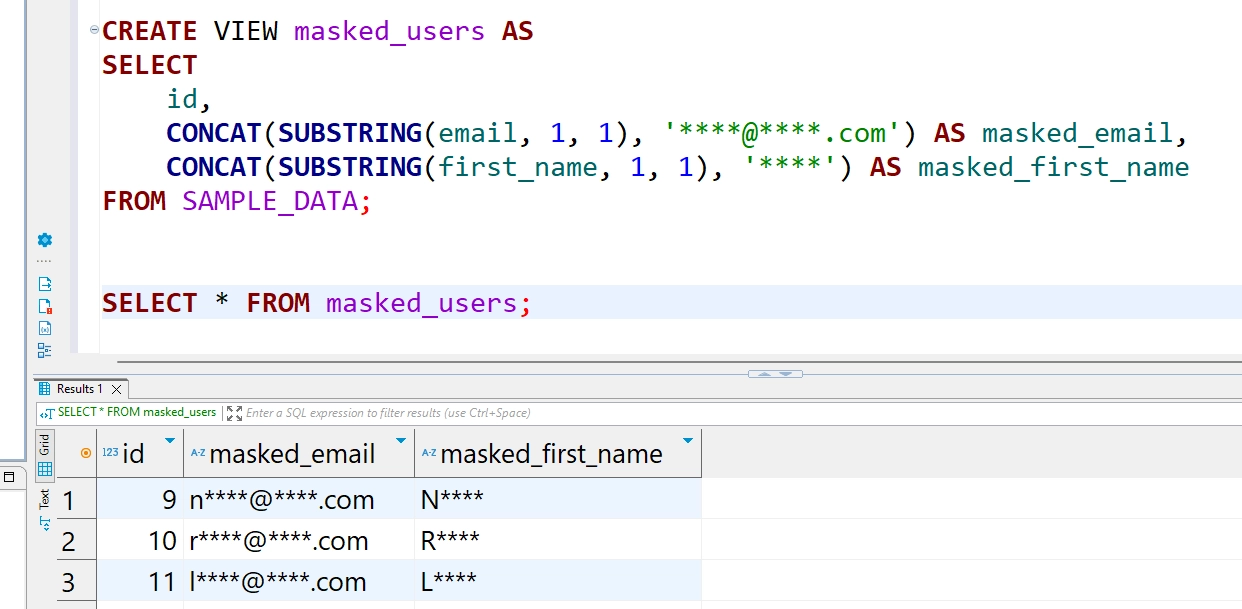
3. Using Hive's Built-In UDF Functions for Data Masking
Hive supports several built-in UDF functions for data masking, offering an easy way to protect sensitive data without implementing custom functions.
- Mask Email (Keep the first letter visible):
SELECT
id,
mask_show_first_n(first_name, 1) AS masked_first_name,
mask_show_first_n(email, 1) AS masked_email
FROM SAMPLE_DATA;
This uses mask_show_first_n() to reveal the first character of both first_name and email, while masking the rest.
- Mask Full Data:
SELECT
id,
mask(first_name) AS masked_first_name,
mask(email) AS masked_email
FROM SAMPLE_DATA;
Here, mask() fully masks the data, replacing characters based on default rules (uppercase as X, lowercase as x, and numbers as n).
You can see example of resulting output for both of those queries below.
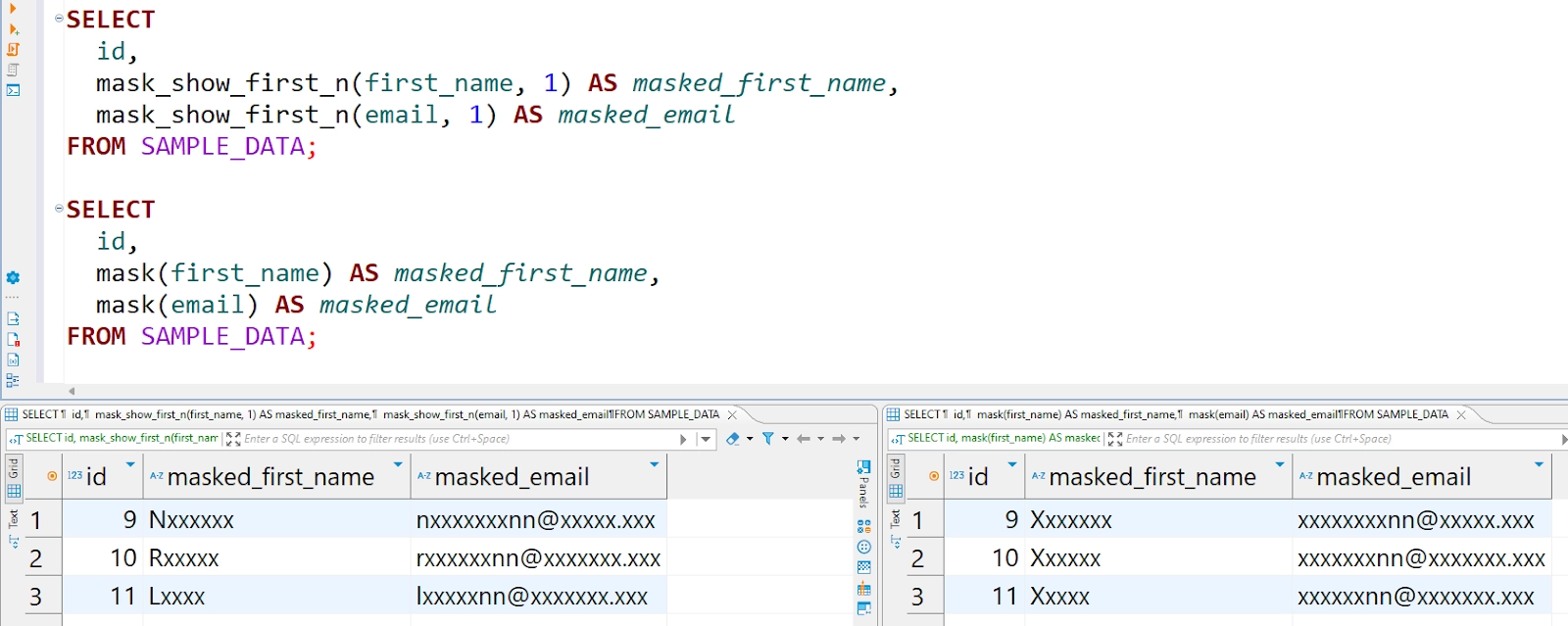
You can also implement your own UDF functions for data masking, to learn more about this topic, visit Apache Hive's UDF documentation page.
Hive's Built-in Masking Limitations
While Hive offers simple data masking options, they come with inherent limitations:
Static Data Masking: Hive’s masking is fixed and doesn’t adapt to user roles or context. Functions like
mask(),mask_show_first_n(), andregexp_replace()apply the same transformation for all users, unlike Dynamic Data Masking (DDM), which adjusts based on access controls.No Role-Based Masking: Hive’s built-in methods apply identical masking for all users, meaning even privileged users see masked data unless separate access controls are enforced.
Limited Customization: Masking functions follow predefined patterns (
X,x,n), andregexp_replace()only supports static pattern matching. More advanced masking—like conditional or role-based transformations—requires custom UDFs or external tools.
For advanced masking needs, consider integrating dynamic data masking solutions or implementing custom UDFs tailored to your specific requirements.
Dynamic Data Masking for Apache Hive with DataSunrise
To overcome Hive's built-in masking limitations, DataSunrise delivers comprehensive Dynamic Data Masking (DDM) that enables real-time protection of sensitive data based on user roles and context. Unlike Hive's static methods, DataSunrise dynamically controls data visibility through predefined security rules.
Key Advantages of DataSunrise's Dynamic Data Masking for Apache Hive
- Role-Based Security – Applies masking based on user roles and access levels
- Context-Aware Protection – Customizes masking based on query context and user attributes
- Non-Intrusive Implementation – Masks data in real-time without modifying the original data
- Flexible Masking Options – Supports various techniques from full obfuscation to format-preserving masking
- Hive Integration – Works seamlessly with existing Hive deployments
Implementing Dynamic Data Masking in DataSunrise for Hive
With DataSunrise, dynamic data masking can be set up using predefined rules and policies. The typical workflow includes:
- Defining Masking Policies – Specify which columns should be masked and under what conditions.
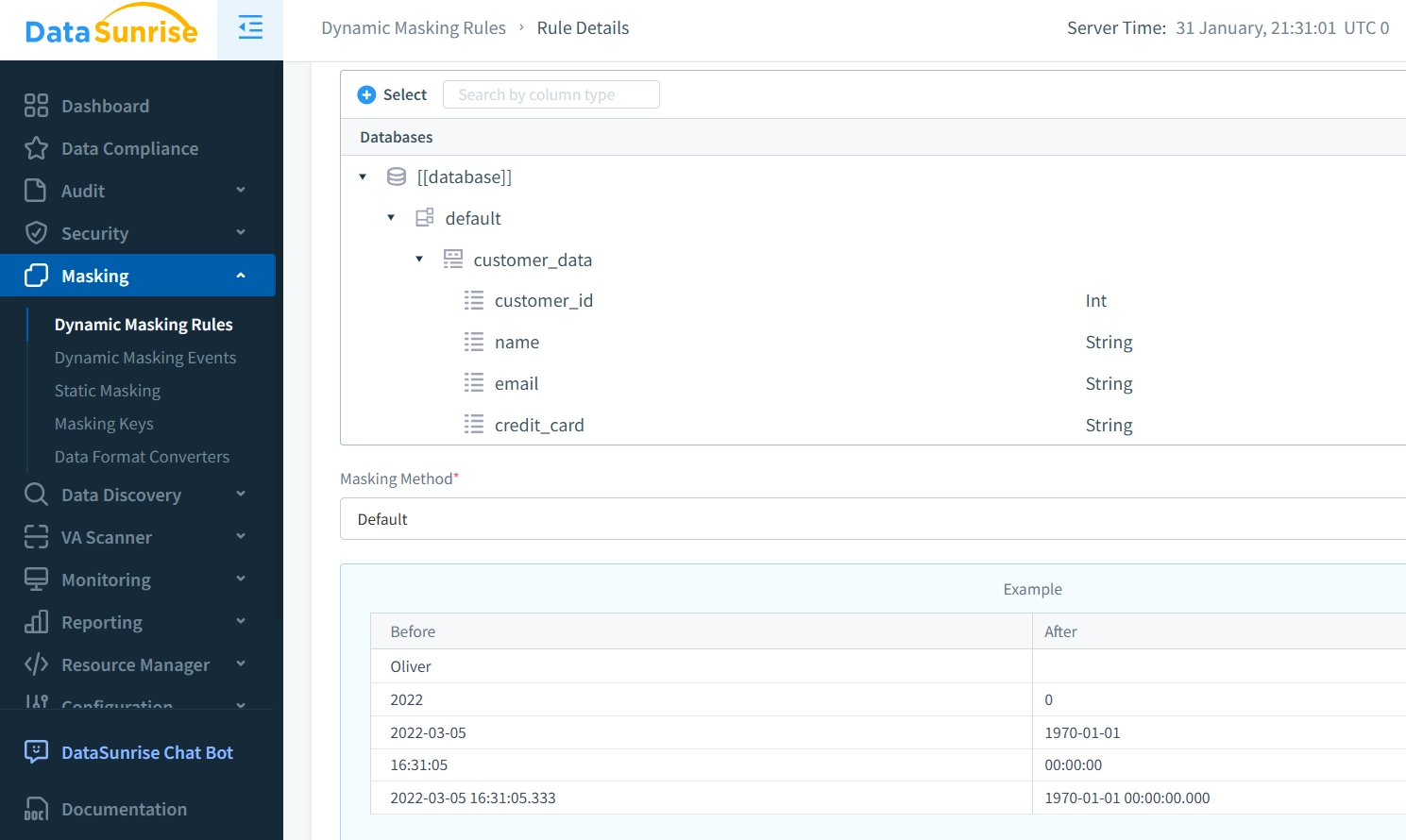
- Configuring User Roles and Permissions – Assign different masking levels based on user roles.
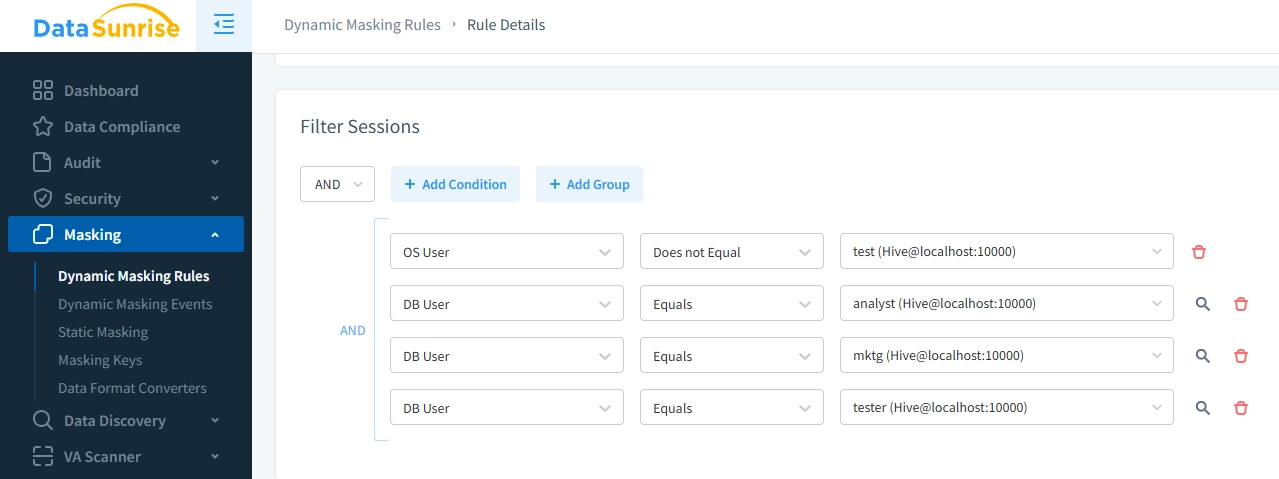
- Configuring Scheduling and Notifications – Set up real-time alerts for security events, and define who gets notified, how and when.
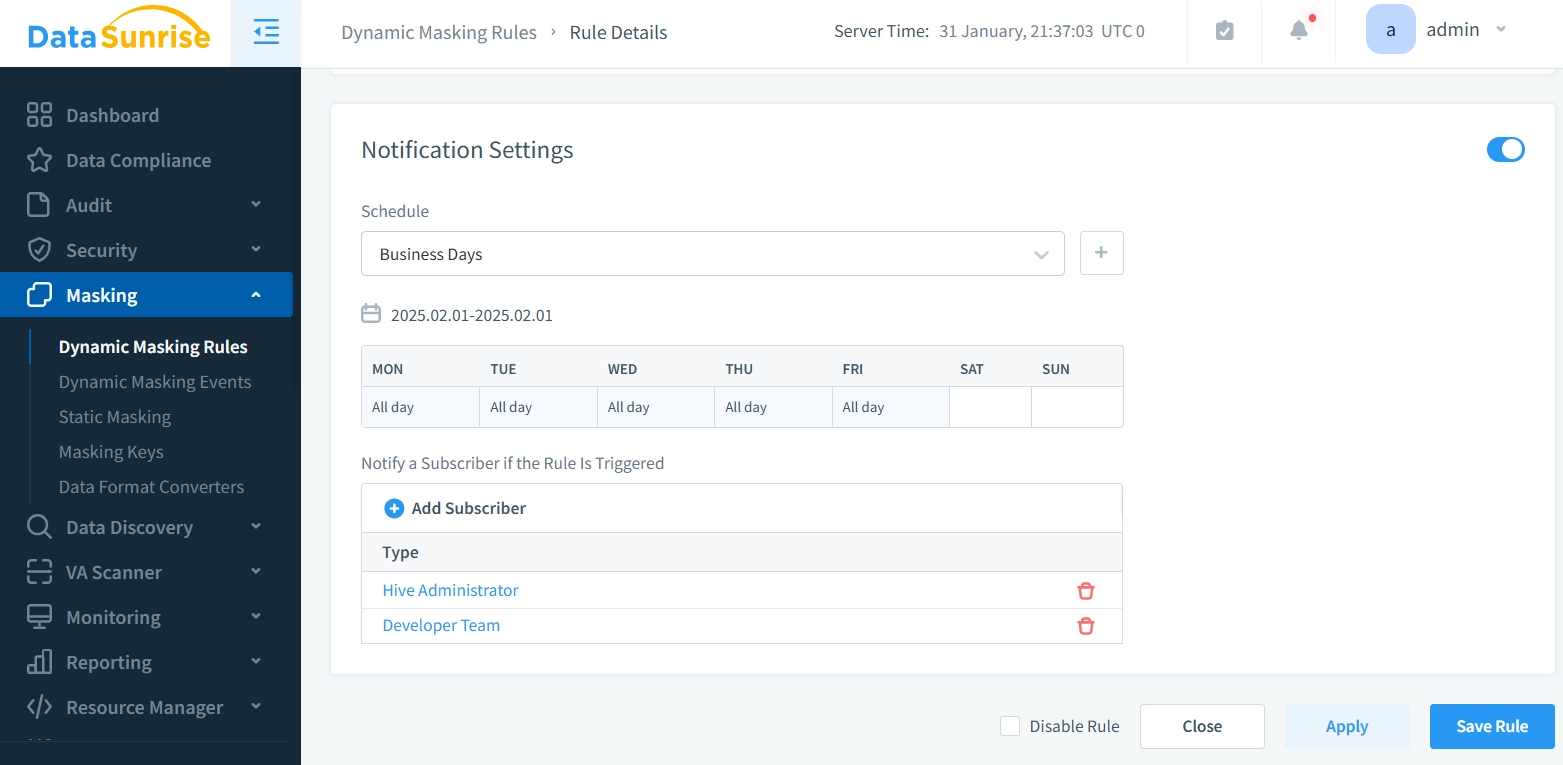
- Testing Dynamic Data Masking Rule – Data is dynamically masked based on the active security policies whenever a query is executed.
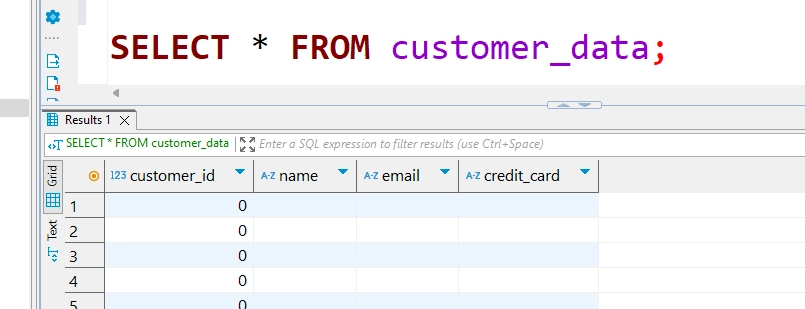
Conclusion
Dynamic data masking for Apache Hive is important component of modern data security strategies. By leveraging tools like DataSunrise, organizations can protect sensitive data, achieve regulatory compliance, and reduce the risk of data breaches without compromising data usability.
DataSunrise's dynamic data masking for Apache Hive offers a robust solution for modern data protection challenges. Organizations can seamlessly implement comprehensive data security and maintain regulatory compliance (GDPR, HIPAA) while preserving full data functionality.
Experience the power of advanced data protection through our online demo and discover how DataSunrise can strengthen your data security strategy.
